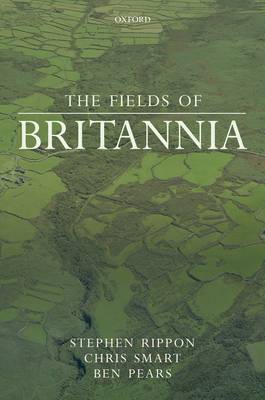
- Afhalen na 1 uur in een winkel met voorraad
- Gratis thuislevering in België vanaf € 30
- Ruim aanbod met 7 miljoen producten
- Afhalen na 1 uur in een winkel met voorraad
- Gratis thuislevering in België vanaf € 30
- Ruim aanbod met 7 miljoen producten
Zoeken
Fields of Britannia
Continuity and Change in the Late Roman and Early Medieval Landscape
Stephen Rippon, Chris Smart, Ben Pears
Hardcover | Engels
€ 217,95
+ 435 punten
Omschrijving
It has long been recognized that the landscape of Britain is one of the 'richest historical records we possess', but just how old is it? The Fields of Britannia is the first book to explore how far the countryside of Roman Britain has survived in use through to the present day, shaping the character of our modern countryside. Commencing with a discussion of the differing views of what happened to the landscape at the end of Roman Britain, the volume then brings together the results from hundreds of archaeological excavations and palaeoenvironmental investigations in order to map patterns of land-use across Roman and early medieval Britain. In compiling such extensive data, the volume is able to reconstruct regional variations in Romano-British and early medieval land-use using pollen, animal bones, and charred cereal grains to demonstrate that agricultural regimes varied considerably and were heavily influenced by underlying geology. We are shown that, in the fifth and sixth centuries, there was a shift away from intensive farming but very few areas of the landscape were abandoned completely. What is revealed is a surprising degree of continuity: the Roman Empire may have collapsed, but British farmers carried on regardless, and the result is that now, across large parts of Britain, many of these Roman field systems are still in use.
Specificaties
Betrokkenen
- Auteur(s):
- Uitgeverij:
Inhoud
- Aantal bladzijden:
- 472
- Taal:
- Engels
Eigenschappen
- Productcode (EAN):
- 9780199645824
- Verschijningsdatum:
- 15/12/2015
- Uitvoering:
- Hardcover
- Formaat:
- Genaaid
- Afmetingen:
- 157 mm x 236 mm
- Gewicht:
- 816 g

Alleen bij Standaard Boekhandel
+ 435 punten op je klantenkaart van Standaard Boekhandel
Beoordelingen
We publiceren alleen reviews die voldoen aan de voorwaarden voor reviews. Bekijk onze voorwaarden voor reviews.








